| From Sedona we travelled up Oak Creek Canyon (US89) towards
Flagstaff some 20 miles to the north. The scenery is very pleasant but the
road is hard work in a camper with lots of turns and switchbacks. So our
concentration was mostly on the road. Oak Creek is a small river (at least
at this time of year) but it explains why there are so many trees in this
area. | 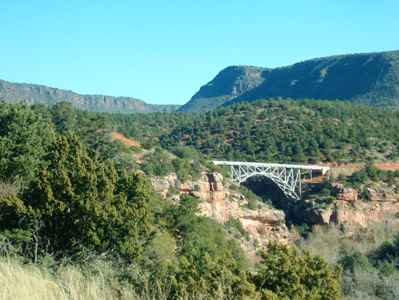 |
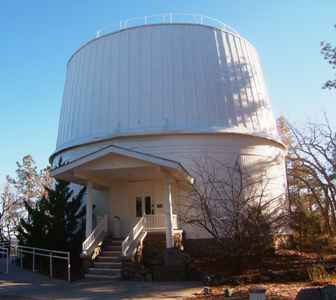 | Flagstaff is a
long sprawling town squeezed between the I40 and the cliffs of the San
Francisco mountains to the north, with not a lot to recommend it. However we did visit the
Lowell Observatory and had a guided tour with our own personal guide since
no-one else had shown up. Lowell was an amateur astronomer from the east and
had the first observatory built so he could study Mars. This houses the
original telescope which is a 24" optical scope. The
building was designed and built out of wood by 2 local craftsmen. They used
this 'bucket' design since they felt that wood was not strong enough to
support a proper dome. But it does have a slot in the rounded roof, and the roof rotates on tyres from pickup trucks. You can just see them below. |
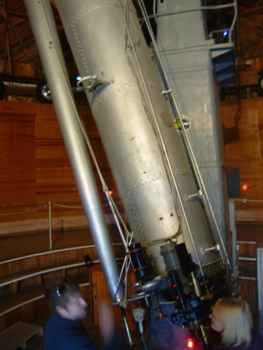 | This is the
telescope inside. It has such a small field of view that it has finderscopes on the
side to help you point it at the right bit of sky. It is finely balanced and
is still moved by hand. | 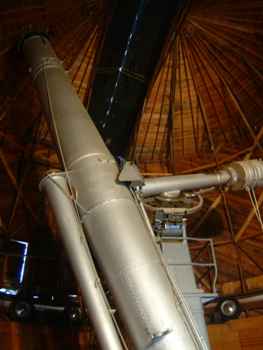 |
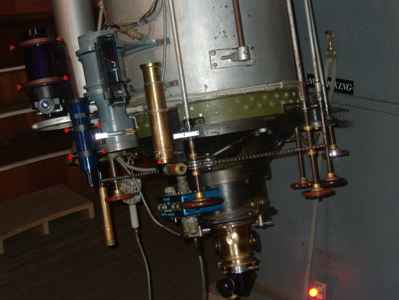 | The eyepiece
bit at the bottom is quite complex. It is still used occasionally today but most of the
work is now done at another complex 20 miles further south where the light
pollution from the town is less. |
| The second telescope is smaller with a final lens of only 13". It
is called an astrograph because it is used to make photographic pictures on
14" x 17" glass plates rather than for purely optical viewing. Its main
claim to fame is that it was the telescope used to find Pluto in 1934. Percival Lowell had
measured the orbits of the outer planets and concluded that another planet
was causing wobbles in their movement. Thus they looked for and found Pluto
only 6° from
where he predicted it would be. In hindsight the wobbles were caused by discrepancies in earlier measurements and Pluto has no impact. | 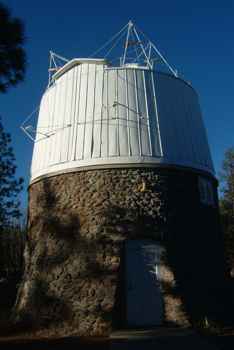 |
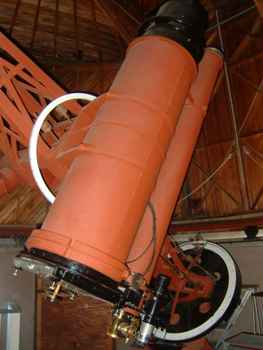 | The
telescope is much smaller and of a different design to the first. The time exposure of
the plates was very long and the telescope had to be constantly moved
through the night to keep it focused. This tedious work was done for hours
every night by Clyde Tombaugh who must have nearly frozen to death. But it
was Tombaugh who became so familiar with the pattern of stars on the plates
that he was able to identify the one dot that had moved between two
exposures, and so made the actual discovery of the new planet. Pluto revolves around the sun at
an inclination of 15° to all the other
planetary orbits, once every 248.57 years |
| Although this looks like an observatory, it is actually a library
which houses the observatory's collection of books and artifacts. | 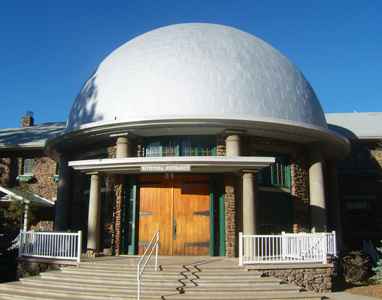 |
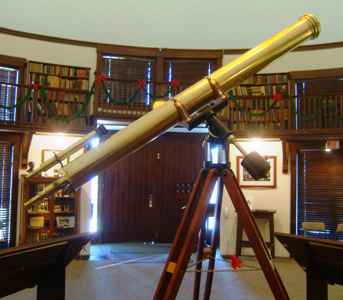 | They include
this brass telescope which was used by Andrew Douglass in 1894 to find this
site in which to build the Lowell observatory. In those days it had the
cleanest air in Arizona. |
| This is the Blank Comparator which was used by Clyde Tombaugh to
find Pluto. The two photographs were taken six days apart. The stars had
not moved but the planet had. | 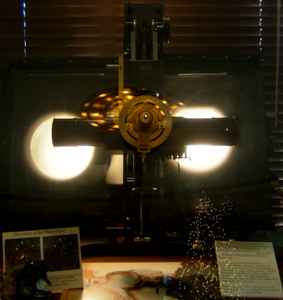 |
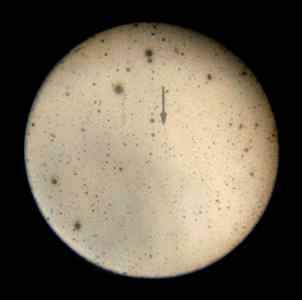 | The arrow
points to the dot which is Pluto. It is in a different position on the two
photographs. Now I can't see it on the original photographs I took or even
the ones he took. There are over 1000 dots on each photo and he took
thousands of photos. For 1934 this was a mind-bending achievement. | 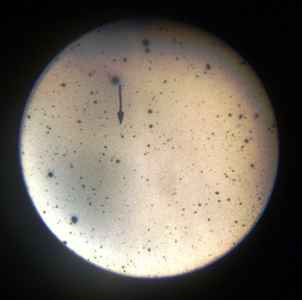 |
| This is a view from the observatory over Flagstaff. I assume the
dome is a sports arena of some sort. It isn't another observatory. | 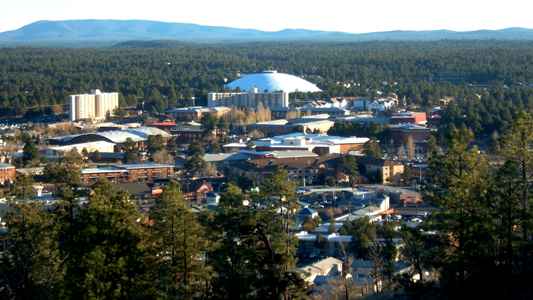 |
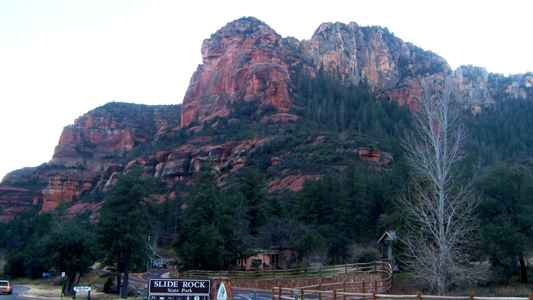 | So we headed
back to Sedona via Oak Creek Canyon again, pausing briefly at Slide Rock State
Park. A very small park just for a slippery rock in the river which you can
slide down. Too damn cold for me!. |
| I'll settle for admiring the rock formations as the sun sets and
the temperature drops like a stone. | 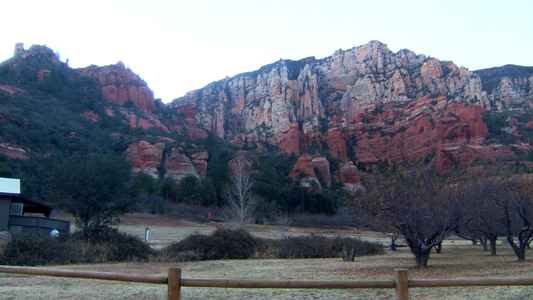 |
|